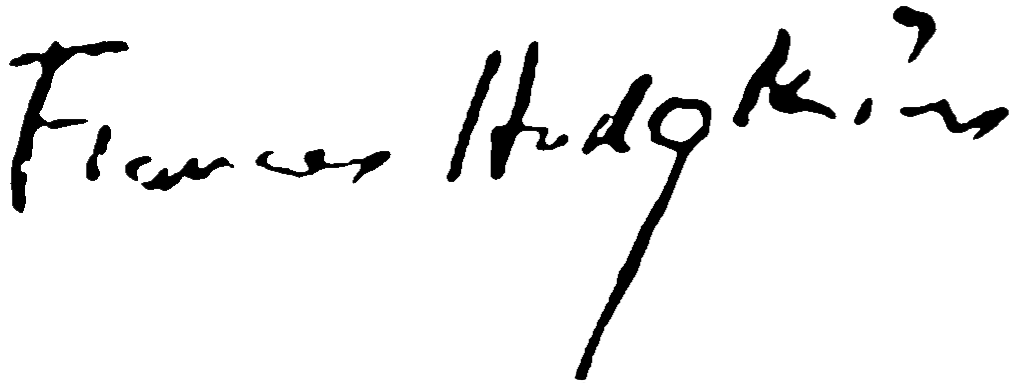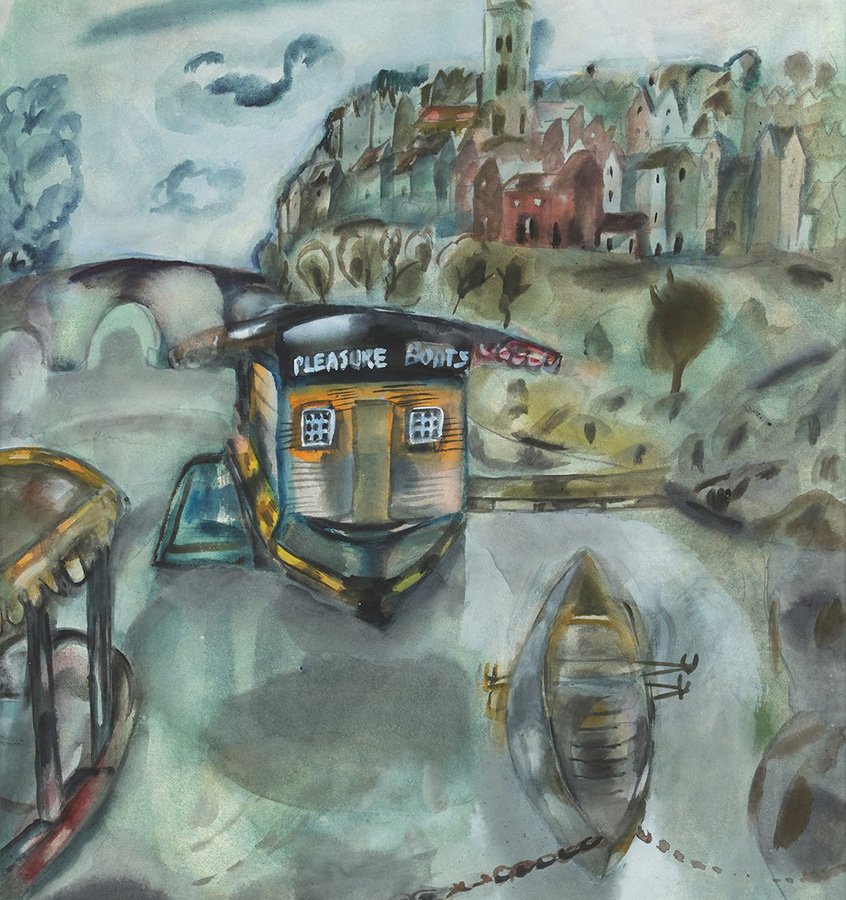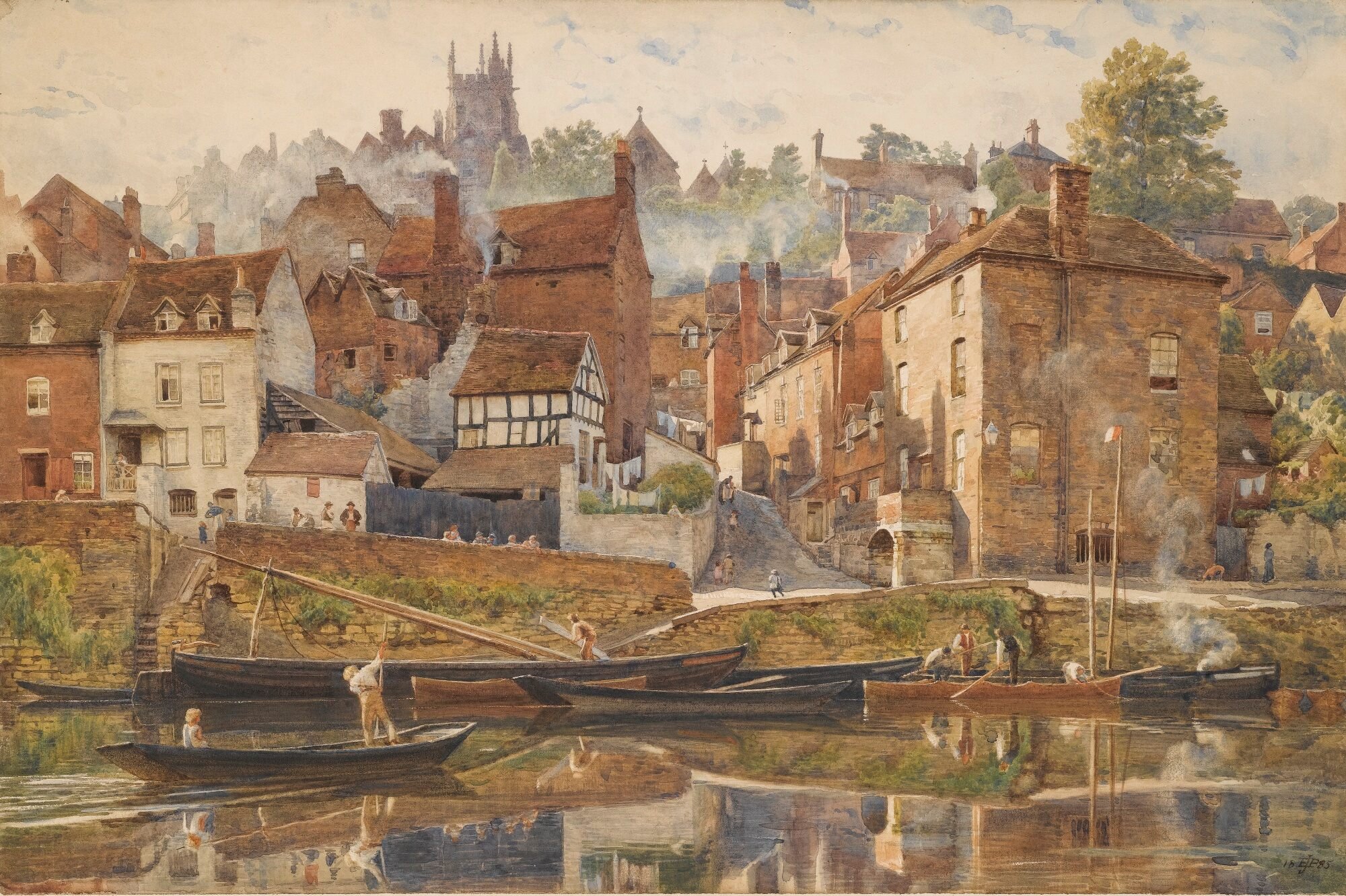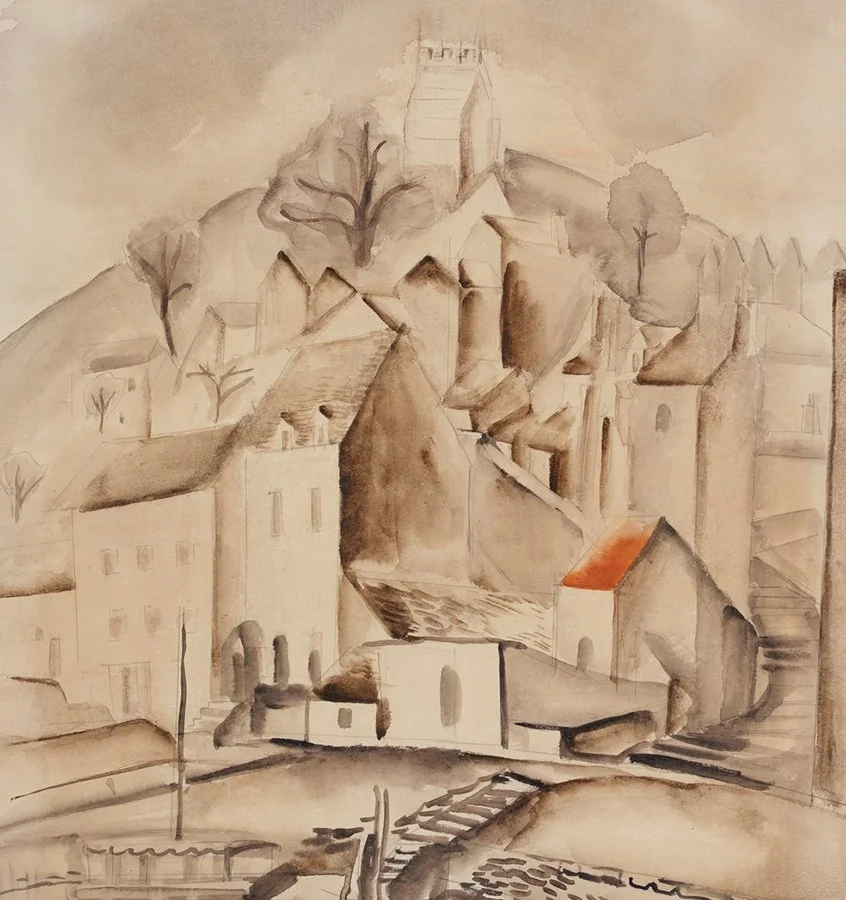Surmounting the High Town of Bridgnorth stands the ruins of Bridgnorth Castle, begun in the 12th century by Robert de Belleme, Earl of Shrewsbury. Today, it leans at a perilous angle, a beloved folly standing in the midst of Victorian gardens. One of the reasons Frances Hodgkins delighted in Bridgnorth (she taught there over several summers between 1926 and 1932) was the variety of views and combinations of architectural and natural forms that were readily available.
When Royal Academy President E J Poynter painted a similar view in 1885, he had emphasized architectural detail – every brick on each building carefully delineated, a half-timbered cottage standing out in the foreground, smoke curling up from numerous chimneys; boys on the river plying their skiffs, and the steep path leading up to the upper town, the tower of the ruined castle standing out on the skyline.
Edward John Poynter - By Severnside, Bridgnorth
While Hodgkins has painted the above watercolour from a similar vantage point, hers is a modernist approach, simplifying the forms, their blank facades stacked side by side like elongated building blocks that might equally represent buildings depicted during her time in St Paul du Var in the south of France or Montreuil-sur-Mer in 1924. The tower looms in a comparable manner, but it is perhaps her treatment of the reflections on the water that is a real point of difference. Poynter’s foreground appears almost cluttered with reflections, whereas Hodgkins creates a mood mysterious.
In November 1926 she had an extremely successful one-person exhibition at 2 Mount Street, Manchester, among which were three works entitled Bridgnorth. The second example included here seems to have zoomed in, removing the river and the castle, instead focusing on the layers of buildings, and the horizontal effects of different sets of steps.
The third composition remains unidentified at this point. Manchester critic O Raymond Drey wrote in the introduction to the show’s catalogue that “she makes each stroke of her brush instinct with life.”
Pleasure Boat, Bridgnorth is painted from a vantage point further along the river, so that rather than the ruined tower of the castle in the High Town, the copper cupola atop the tower of St Mary’s Church leads the eye upwards. Whereas in her 1926 watercolour, cloud billows evenly over the scene, here squiggly clouds drift off above a simplified bridge (a contemporary photograph shows that it had two arches) that leads across to the opposite riverbank.
A distinguishing feature of this watercolour is the artist’s change of perspective; whereas the barge itself is depicted obliquely, from the front, a canoe on the river is seen from directly above, as in a bird’s-eye view. Hodgkins places her major focus on the pleasure boat landing stage further along the river.
The same historical photograph shows how accurately she interpreted it. One of its vessels hoves into sight in the foreground, its ruffled canopy possibly reminded Hodgkins of the popular song, “Surrey with a fringe on top.”
Hers is a witty approach, emphasising the anthropomorphic ‘face’ of the landing stage. The skiff in the foreground mirrors those that populate Poynter’s 19th century watercolour, while the pleasure boat also hovers in her earlier watercolour of Bridgnorth, its structure reflected on the water’s surface. In Pleasure Boat, Bridgnorth, by comparison, Hodgkins captures the liquescence of the water itself, a focus that continued to capture her interest throughout her later career. Importantly, there are no figures here to populate the scene – hers is a pure landscape painting, a study in cloudscapes, riverbank and the Severn itself, the stage’s humorous face addressing the figure beyond the picture plane – that of the viewer, rather than the viewed.
Beyond the vessels in Pleasure Boat, Bridgnorth can be seen the treelined river bank, the narrow and steeply-roofed houses of Bridgnorth captured here in an economic and impressionistic manner, but also showing enough detail to capture the essence of the town.
_
With thanks to Mary Kisler



